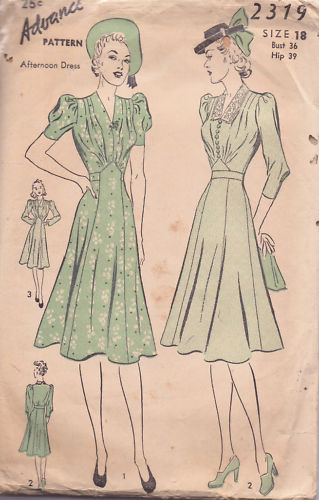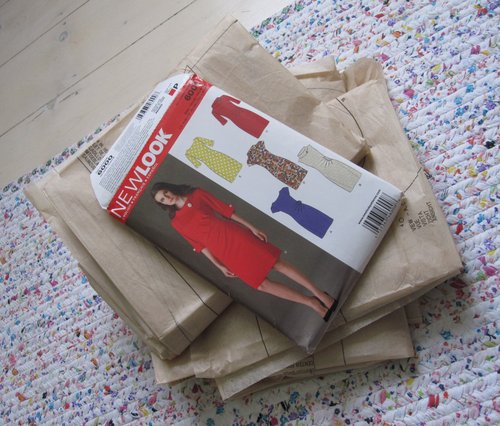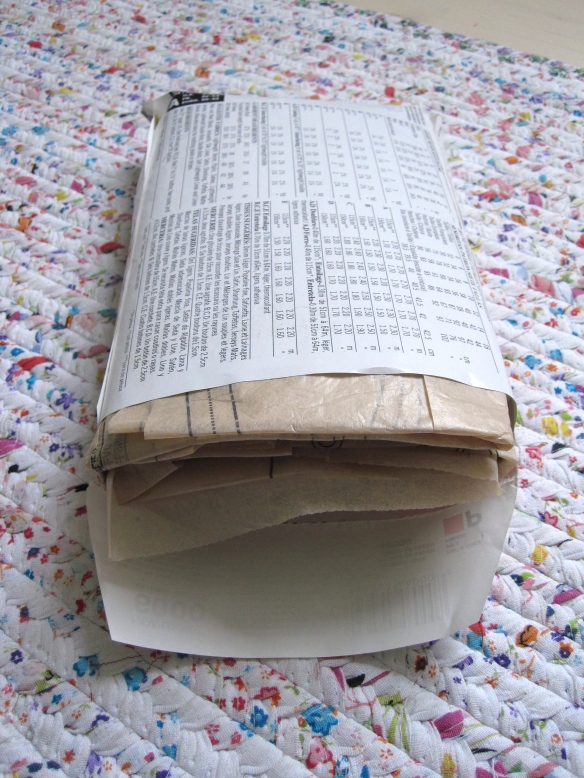At the moment I seem to be following two schools of thought when it comes to clothes making from commercial patterns. However, as I sit here about to start typing I think I may have just come to the realisation that if I combine the two things will become much easier!
The first way I have been doing things is to take my measurements, find the nearest size that corresponds to those measurements on the pattern and then make a toile. From the toile I then have been making the adjustments I need, transferring them back to the pattern and then cutting out the proper fabric.
In my Clothes Making class it is done a bit differently, and no doubt more correctly! From the tight restrictions we have been given, this is the pattern that I have chosen (option D).

Rather than making a toile, we took all our body measurements and then worked directly with the pattern to make any alterations that are needed. This is what I had to do.
Make front larger than back
Unless I am very unfortunate, I am not anticipating my shoulders or back to grow at all while I’m pregnant! Therefore my measurements are a bit skewed as I will stay a size 12 everywhere except around my tummy.
On a commercial pattern you cut out along the line according to your size. Here you can see the four different options:

For everything except the front I cut out a 12. For the front I cut out a 14. If I just left them like this though, the front and back would not fit together as they are two different sizes. To overcome this the extra fabric from the size 14 front needs to be redistributed. As you can see from the picture, the top has pleats and these pleats can be made bigger to use the extra fabric. Lost?! I was for the first few explanations from my tutor!
Maybe some diagrams will help.
 Here you can see the uncut front of the top, with the size 14 being the outer line.
Here you can see the uncut front of the top, with the size 14 being the outer line.
The difference in size between the 12 and the 14 is 1.4cm, as shown in blue on the left.
This 1.4cm can be incorporated into the front of the top, by making the pleat bigger. The pleat is the boxy thing in the middle of the pattern piece, and the red lines show where I have made it bigger – 7mm on each side, which adds up to the 1.4cm difference between a 12 and a 14. This will mean that the front (size 14), and back (size 12) will now fit together in construction. I hope.
As additional bump accommodation, I have also made the middle pleat (here shown on the right of the pattern piece) bigger by extending it to the edge of the paper. Shown by the purple lines.
Shorten the top
I also made the top shorter than suggested by removing a section of the pattern using the double black lines on the front and back pattern pieces.
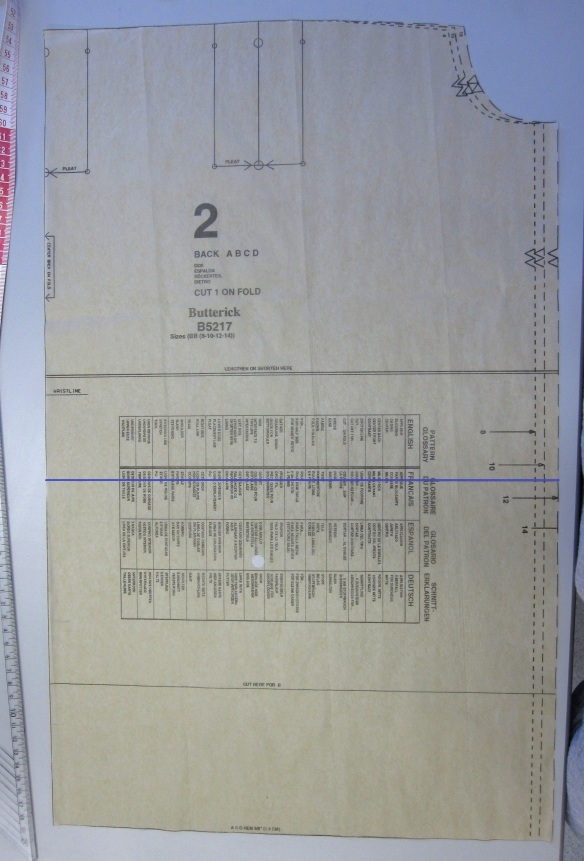
The distance between the double balck lines and purple line is what I need to remove by folding the pattern up.

New shorter top!
Check the shoulders
I then needed to check the shoulder position. Fortunately I didn’t need to adjust this. But I checked like this.

As you can just about make out on the pattern, the neckline is 6.5cm lower than the nape of your neck (nobbly bit at top of your spine). So I measured up 6.5cm from the neckline using the set square, then used a tape measure to measure across to the shoulder. Thankfully it came to 20.5cm which is just about near enough my measurement to be able to leave it as it is!
Bump room
Lastly I added one little extra, a half circle at the bottom of the front, which will mean that as my bump grows the hemline should stay level rather than lifting up!
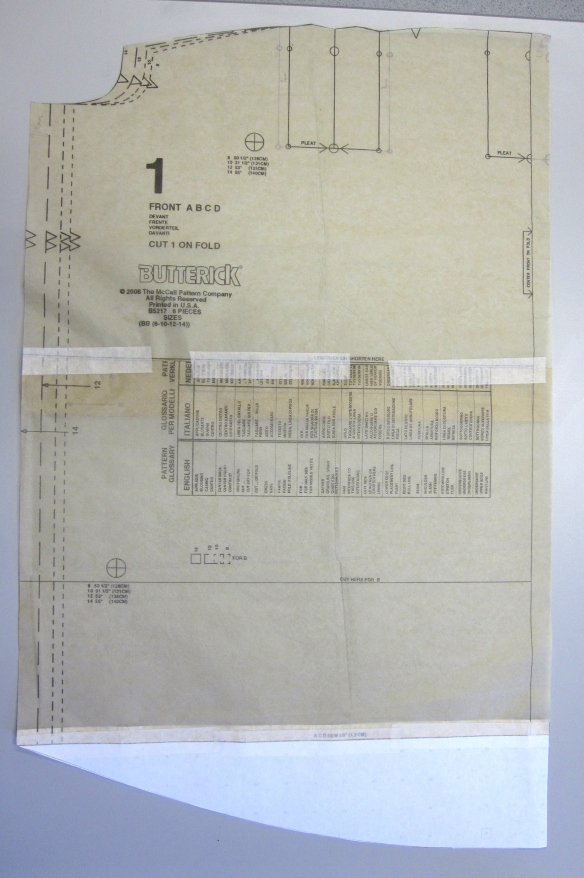
Phew, I hope that made sense!
Back to my initial break through at the start of this post… I’m thinking now that if I start by making alterations to the pattern using my measurements, and then make a toile, and then make further alterations from that, I should have a very long-winded but fail safe way of making clothes that fit me perfectly, no? We shall see!








